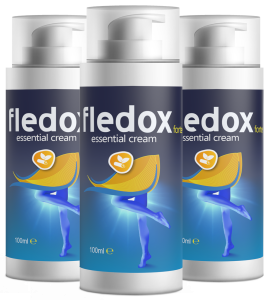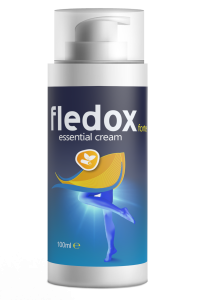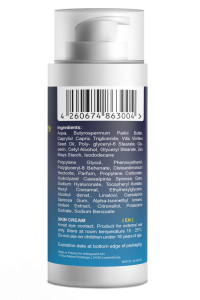Tendinitis, sprains, minor trauma, contusions… Muscles and joints are put to the test, especially during sports sessions. Hence the importance of incorporating a good muscle pain cream. Pain ointments, available over-the-counter and applied directly to the injured area, can relieve pain. Inflammation is a natural reaction of the body when fighting the consequences of trauma or aggression.
It also occurs in arthritis, but also in osteoartrose. It is therefore a useful phenomenon, but some manifestations can be unpleasant: pain, swelling of the injured area (edema), redness, etc…. To soothe the pain caused by inflammation, one can resort to non-inflammatory anti-inflammatory drugs. These drugs are available orally, but also for local application, in the form of a muscle pain cream to be applied directly on the skin.

O que é o Fledox?
Fledox, in any of the presentations it offers, is a natural analgesic and anti-inflammatory of fast effect for muscle and articulação rehabilitation due to its cold-hot effect. Hundreds of athletes use it daily to prepare their muscles and ligaments preventively, before sports, to avoid injuries due to intense physical effort. It is also indicated in all phases of muscle and joint rehabilitation treatment. It can also be used in case of mild lumbago. Fledox anti-inflammatory is used to prevent stiffness. This is the typical joint and muscle pain resulting from exercício.
Thanks to this gel, which is massaged into the muscular areas of the legs and arms, this discomfort can be treated quickly and effectively after physical exertion. Nutritional experts advise to accompany the use of this cream with suplementos alimentares rich in hyaluronic acid, magnesium or collagen. In addition to being an excellent anti-inflammatory, many apply Fledox before sport to prepare the muscles of the legs, which will suffer the greatest load of physical activity. And also after the end of the sports session. It is therefore a good remedy to prevent muscle overload and stiffness. It also has advantages over other anti-inflammatory drugs in that it has no side effects and is somewhat less potent than paracetamol or ibuprofen.
What is Fledox used for?
- Dor nas articulações: Fledox can be used to relieve pain in the joints caused by arthritis, rheumatism or overuse.
- Inflammation: The ointment can also be used for inflammatory conditions such as joint inflammation or tendonitis to reduce swelling and inflammation.
- Injuries: Fledox can be used on injuries such as sprains, bruises or strains to relieve pain and aid healing.
- Stiffness and limited Mobility: If you suffer from stiffness or limited mobility in the joints, Fledox can help restore flexibility and mobility.
If these problems are not treated, various consequences can occur:
- Worsening of Pain: without treatment, joint pain can worsen and lead to an impaired quality of life.
- Impaired Mobility: Without proper treatment, stiffness and limited mobility in the joints can progress and make everyday activities difficult.
- Progression of Inflammation: If inflammatory processes are left untreated, it can lead to worsening of the inflammation and possibly further complications.
There are different types or kinds of joint problems that can occur. Some of the most common are:
- Arthritis: Arthritis is an inflammatory condition that affects the joints and can cause pain, swelling and stiffness. There are different types of arthritis, such as rheumatoid arthritis, osteoarthritis and psoriatic arthritis.
- Rheumatism: Rheumatism is a collective term for various diseases of the musculoskeletal system that affect joints, muscles, tendons and connective tissue. It can lead to pain, inflammation and restricted mobility.
- Gout: Gout is a form of arthritis caused by the deposition of uric acid crystals in the joints. It causes severe pain, redness and swelling of the affected joints.
- Osteoporosis: Osteoporosis is a disease in which the bones lose density and become brittle. This can lead to joint problems as the bones provide less support.
Recommended Use
Fledox is recommended for external use. Here are the general instructions for use:
- Thoroughly clean and dry the affected area.
- Apply a sufficient amount of Fledox ointment to the affected area.
- Gently massagem the ointment into the skin until it is completely absorbed.
- Reapply as needed, usually 2-3 times a day or as directed by your doctor or pharmacist.
- Avoid contact with open wounds, eyes or mucous membranes.
- Wash your hands thoroughly after applying the ointment.
Contra-indicações
- Hypersensitivity or allergy to any of the ingredients of Fledox: It is important to check the list of ingredients to ensure that there is no known allergy.
- Open wounds or skin injuries: The ointment should not be applied to open wounds as this may cause irritação ou infecção.
- Children under a certain age: The use of Fledox Ointment in children may be age-dependent. It is important to follow the manufacturer’s specific instructions.



Benefits of Fledox
- Alívio das dores: Fledox can effectively help relieve joint pain, providing noticeable relief for the patient.
- Anti-inflammatory: The anti-inflammatory properties of Fledox can help to reduce inflammation in the affected joints and reduce swelling.
- Improvement of Mobility: The use of Fledox can improve joint mobility, resulting in increased flexibility and mobility.
- Local Application: Fledox is applied topically to the affected areas, which allows for targeted application and allows the active ingredients to work directly where they are needed.
- Healing Support: The ointment can also support the healing processes of injuries or inflammatory diseases and accelerate the recovery process.
- Easy to Use: Fledox is easy to use and can be conveniently integrated into everyday life.
Conclusão
The effect of Fledox can vary from person to person, but many users report noticeable relief from joint pain after a short time. Fledox can also be used for chronic joint problems such as arthritis or osteoarthritis. It can help to relieve pain and improve mobility. Fledox can be used as part of a holistic treatment approach for joint pain. However, it is advisable to talk to your doctor about the best course of action and consider other measures such as physiotherapy or medication.
